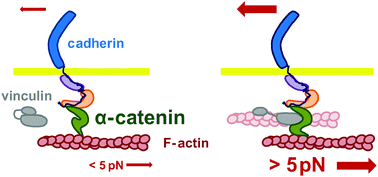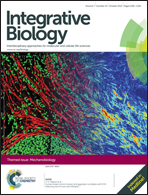The mechanotransduction machinery at work at adherens junctions
Abstract
The shaping of a multicellular body, and the maintenance and repair of adult tissues require fine-tuning of cell adhesion responses and the transmission of mechanical load between the cell, its neighbors and the underlying extracellular matrix. A growing field of research is focused on how single cells sense mechanical properties of their micro-environment (extracellular matrix, other cells), and on how mechanotransduction pathways affect cell shape, migration, survival as well as differentiation. Within multicellular assemblies, the mechanical load imposed by the physical properties of the environment is transmitted to neighboring cells. Force imbalance at cell–cell contacts induces essential morphogenetic processes such as cell–cell junction remodeling, cell polarization and migration, cell extrusion and cell intercalation. However, how cells respond and adapt to the mechanical properties of neighboring cells, transmit forces, and transform mechanical signals into chemical signals remain open questions. A defining feature of compact tissues is adhesion between cells at the specialized adherens junction (AJ) involving the cadherin super-family of Ca2+-dependent cell–cell adhesion proteins (e.g., E-cadherin in epithelia). Cadherins bind to the cytoplasmic protein β-catenin, which in turn binds to the filamentous (F)-actin binding adaptor protein α-catenin, which can also recruit vinculin, making the mechanical connection between cell–cell adhesion proteins and the contractile actomyosin cytoskeleton. The cadherin–catenin adhesion complex is a key component of the AJ, and contributes to cell assembly stability and dynamic cell movements. It has also emerged as the main route of propagation of forces within epithelial and non-epithelial tissues. Here, we discuss recent molecular studies that point toward force-dependent conformational changes in α-catenin that regulate protein interactions in the cadherin–catenin adhesion complex, and show that α-catenin is the core mechanosensor that allows cells to locally sense, transduce and adapt to environmental mechanical constrains.

- This article is part of the themed collection: Mechanobiology


 Please wait while we load your content...
Please wait while we load your content...